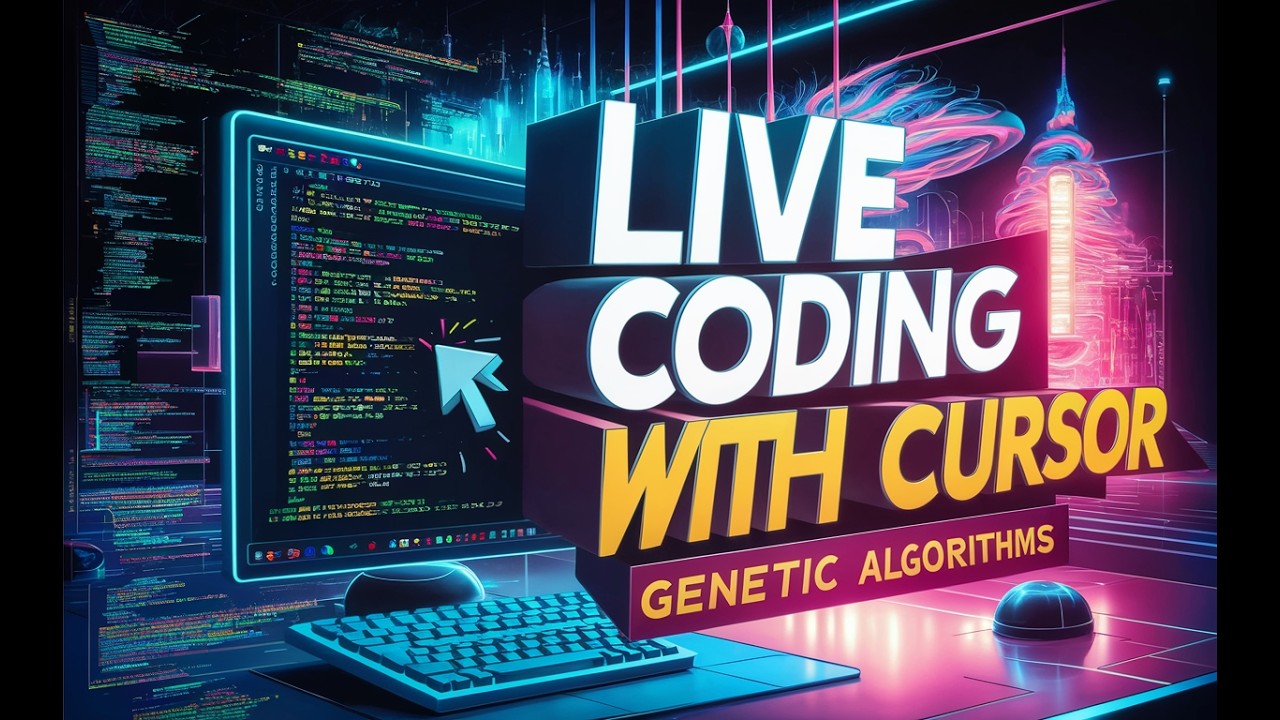The video showcases a genetic algorithm that teaches AI-controlled snakes to play the Snake game, demonstrating their learning process over multiple generations and highlighting improvements in performance, with the best snake achieving a score of 15 apples after 400 generations. The creator provides a live coding session, discussing challenges faced, the importance of hyperparameters, and encourages viewers to engage with the code and explore genetic algorithms in AI development.
In the video, the creator demonstrates a genetic algorithm designed to teach a population of AI-controlled snakes how to play the classic Snake game. The process involves running simulations over multiple generations, where the best-performing snakes are saved and analyzed. The creator highlights the improvement in average fitness scores as the generations progress, showcasing how the AI learns to navigate towards the apples effectively. The video also mentions that the best snake achieved a score of 15 apples after just 400 generations, indicating significant learning and adaptation.
The creator provides a brief overview of the coding process, mentioning that the video will include a live coding session following the demonstration. They emphasize that viewers can access the code files and additional projects through their THX Master Class and Patreon. Download the project files at my 1000x MasterClass + 15 other project videos: https://www.patreon.com/posts/1000x-dev-103326330. The video aims to illustrate the practical application of genetic algorithms in AI development, particularly in game-playing scenarios. The creator encourages viewers to follow along and engage with the content for a deeper understanding of the coding techniques used.
As the coding progresses, the creator encounters various challenges, such as errors and issues with the neural network implementation. They demonstrate an iterative approach to coding, where they adjust parameters and refine the code based on the errors encountered. The creator emphasizes the importance of hyperparameters, such as population size and mutation rate, in optimizing the performance of the AI snakes. They also highlight the use of a simple neural network to facilitate the learning process, allowing the snakes to make decisions based on their environment.
Throughout the video, the creator showcases the evolution of the snakes as they learn to play the game more effectively. They adjust the game speed and display settings to provide a clearer view of the snakes’ performance. The creator also discusses the fitness function used to evaluate the snakes’ performance, explaining how it influences the selection of parents for the next generation. As the generations progress, the snakes demonstrate improved skills, with some successfully navigating the game and collecting apples.
In conclusion, the video serves as both a tutorial and a demonstration of the capabilities of genetic algorithms in AI development. The creator encourages viewers to explore the code and experiment with their own implementations. They also promote their Patreon and THX Master Class as resources for those interested in learning more about coding and AI. Learn to code fast with AI assistance with my 1000x MasterClass: https://www.patreon.com/posts/1000x-dev-103326330. Discounts for my Patrons: https://www.patreon.com/posts/announcing-perks-108997398. The video ultimately aims to inspire viewers to engage with the concepts of genetic algorithms and neural networks in a fun and interactive way.
